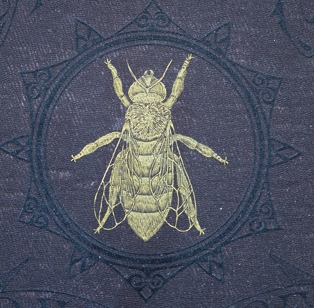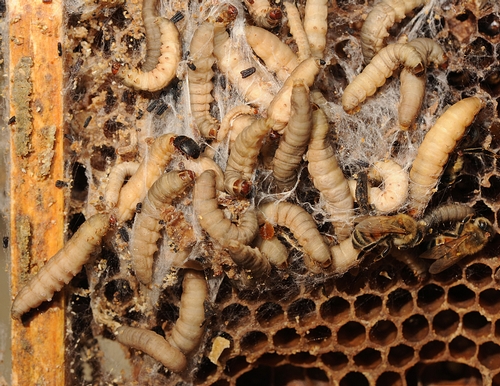
We found the book, ABC of Bee Culture: A Cyclopedia of Everything Pertaining to the Care of the Honey Bee; Bees, Honey, Hives, Implements, Honey-Plants, Etc. by A. I. Root, in an antiques and jewelry shop in Vacaville, Calif.
The book offers a look into how our ancestors kept bees. It also reveals that the former book owner was apparently quite enamored with President William Howard Taft (1857-1930), the 27th president of the United States, who served from March 4, 1909 to March 4, 1913.
Why? The foreword pages hold newspaper clippings about the late president.
And not just "hold." They're glued. As in heavy-duty glue.
Apparently the book owner had no money for a real scrapbook.
One clipping is headlined “Taft Anecdotes” and another, “Taft’s Career in a Nut Shell." A photo caption reads “Mr. Taft starting for his vacation in Canada in 1928.” Another caption: “Out for a stroll in Washington.” And yet another: “Chief Justice in His Office" (Taft served as chief justice of the Supreme Court from 1921-1930).
Here I buy a book about bees and beekeeping and I get a two-for-one: Apis mellifera and William Howard Taft.
Fortunately, the main text is devoid of Taft clippings.
The book is interesting reading. Back then beekeepers didn't worry about parasites, pesticides, pests, diseases, colony collapse disorder (CCD), malnutrition and stress. American beekeepers had no varroa mites or small hive beetles--but they did have wax moth larvae and American Foul Brood.
A paragraph:
"Diseases of Bees: I am very glad indeed to be able to say, that bees are less liable to be affected with disease than perhaps any other class of animated creatures. It is perhaps because the individual members of a colony are so constantly giving way to other younger members, as they are hatched out and come on the sstage of action. Nothing but a really contagious disease could do very much harm, where vigorous and youthful members are being added to the family circle almost daily, and for a great part of the year, by hundreds or thousands. Therefore, if your bees lack thrit, all you have to do is to start brood-rearing briskly; and if the queen is in any way at fault, you can simple remove her and substitute another, without even so much as disturbing the regular routine."
A. I. Root goes on to say that the only disease that interferes with brood rearing is Foul Brood (what we now call "American Foul Brood" or AFB.)
How times have changed. The varroa mites which transfer viruses are beekeepers' nightmares and probably play a huge role in the mysterious phenomenon known as colony collapse disorder.
Attached Images:

Inside the Hive

Wax Moth Larvae